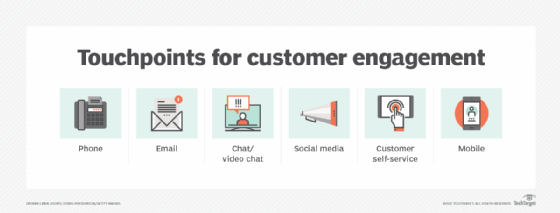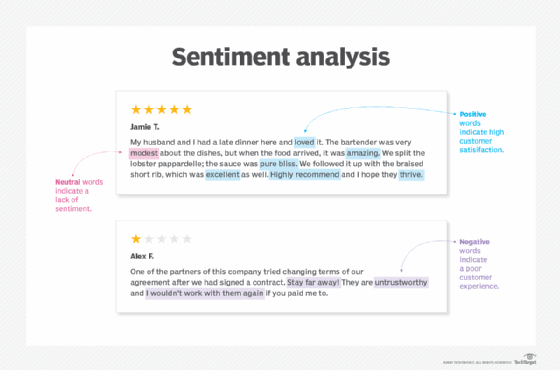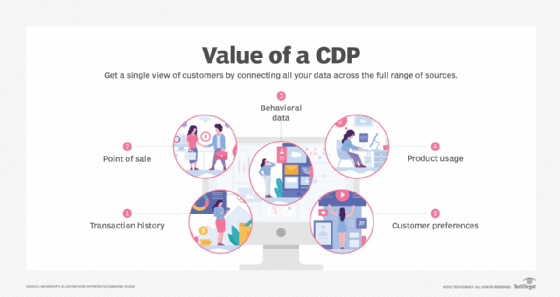8 CX challenges facing organizations and how to address them
There are many barriers to effective CX initiatives, but most revolve around communication at the consumer and enterprise level.
Customer experience -- a top priority in the modern enterprise -- drives customer preferences in the marketplace. Successful CX management requires persistent and perpetual improvement, which can be frustrating due to a number of CX challenges.
CX is all about communication: hearing what the customer is saying and responding to it, then posing follow-up questions that move the relationship forward. Strong communication leads to improved customer satisfaction and customer loyalty, but there are often challenges in that communication at both the customer and enterprise levels.
Here are some examples of those CX challenges:
1. Insufficient response from customers
Improving the customer experience requires copious amounts of data from the consumer. This becomes a problem when there's not enough customer data to work with or when the data doesn't represent enough of the customer base to offer meaningful insights. This can cause CX efforts to miss the mark and leave problems unchecked.
Placing customer response mechanisms in every channel in which customer interaction is happening -- webpages, email, text, social media -- is an effective response to this challenge. Moreover, this multichannel response effort requires constant monitoring to ensure well-balanced response rates and consistent, quality feedback.
This is helpful in other ways, as well; some channels -- webpages and social media, in particular -- offer data on customer behavior, which CX teams can study to predict how best to manage the customer journey.

2. No multichannel management strategy or tools
Omnichannel communication is a challenge. It's tough to craft a consistent customer experience across channels, and it isn't enough to rely on the bells and whistles in a CRM package.
Omnichannel management requires a strategic plan, and crafting that strategy requires strong input from IT. A highly unified, well-synchronized data model can support the customer's use of many channels -- one example of which could be checking product prices and availability at home on a laptop or mobile device; another, trying on clothing in the store itself but completing a purchase later at home. Centralized content management helps enable these purchasing activities.
3. Dealing with qualitative data
Not all customer feedback is checkbox or statistical, of course. Well-constructed surveys ask for qualitative input -- the opinions of survey respondents in their own words. This data is invaluable on many levels. The problem is, it's not always clear how to process and integrate the data into CX processes.
The answer here is to invest in text analytics and customer sentiment analysis to extract the meaning behind the data. Software and services are now available that can read customer comments and extract relevant sentiment, intensity and urgency -- offering value across the enterprise.
Sentiment analysis is now sophisticated enough that it can detect more than ups and downs in customer sentiment; it can often surface customer intentions. For example, will a customer buy again? Will they recommend the product to others? These tools can also recognize changes in mood, which are useful during a service desk interaction. Overall, sentiment analysis is a capability worthy of investment.

4. Poor in-house awareness of CX feedback
Customers aren't always involved in communication troubles; a big issue might be communication in-house, even if customer feedback is strong and consistent. CX is an enterprise-wide commitment, but too often, the data coming back never makes it to the people who need it.
Strong CX closes the customer feedback loop so the insights it produces are available to every employee and department that is in a position to contribute. A notification system should drive this feedback loop, liberally distributing the customer communications that feed CX analytics and corresponding notifications beyond the C-suite as feedback analytics is processed.

5. Organizational silos
Tearing down organizational silos is a good idea for many reasons, but it's even more important when it comes to CX. Silos don't just inhibit communication; silos can distort the organization's view of the customer.
Previously, it was commonplace for sales and marketing to have separate customer databases, and for the service desk, and possibly other departments, to also have their own. This can create considerable discontinuity is the customer experience, because each of these departments could be hosting only a portion of the complete portrait of the customer, leading to incorrect assumptions and assessments of their needs and priorities.
Instead, organizations should consolidate all enterprise customer data into a single, centralized repository such as a customer data platform (CDP). A CDP is not the same thing as CRM; the latter is for managing customer touchpoints, while the former is for tracking and studying customer behavior. All applications and departments can obtain a unified view of the customer with a CDP, leading to continuity in the relationship and a more accurate foundation for journey mapping.
6. Insufficient tools and technology
All of the CX challenges addressed so far are highly dependent on technologies designed very specifically for the purpose; the CDP, for instance, is all about consolidating customer data to create that unified view.
This is also true of sentiment analysis and omnichannel infrastructure. Machine scrutiny of customer-generated text goes beyond generic analytics to implement very targeted methods of extracting useful results from the data. That means investment in analytics software for that purpose.
If the right technologies aren't in place, the problems remain. Getting ahead of the challenges requires a firm commitment throughout the enterprise to invest in the proper tools to empower and enhance CX.
7. Outdated documentation
Even with a CDP in place, and even with a de-siloed, collaborative approach to management of the customer journey, problems can emerge if the unified view of the customer is outdated.
It makes no difference that all the data about the customer is in one place and accessible across the enterprise if it isn't accurate. When the customer's journey is dependent upon so many variables -- demographics, preferences, online behaviors, buying history, etc. -- keeping all that data fresh is an essential step in getting the relationship right.
Across the customer lifecycle, it's inevitable that preferences will vary, needs will change and priorities will shift. When those changes occur, CX teams must make corresponding tweaks to the customer journey. That's how the relationship stays fresh and management of the customer journey remains effective.
8. Unclear ROI for CX projects
A successful CX strategy requires considerable investment to be meaningfully implemented, and that means the C-suite needs to have a firm view on the ROI for customer experience.
If organizations don't clarify ROI, it could result in weaker confidence in the investment and less appreciation of the value of the processes. To this end, it's vital to calculate CX ROI carefully and accurately.
This involves several steps. First, select those metrics that CX affects most heavily. These will often include revenue, customer satisfaction, cost to serve, retention and upsell. Next, establish correlations between the customer journey analytics and those business metrics by identifying the drivers of the customer's behaviors. The strong correlations will surface quantitative values that demonstrate the effect of CX on the metrics that matter.
Those values sum to a new variable, profit from CX. To get CX ROI, organizations need a number on what they are investing in, such as training, tech and operating costs; the time expended; and estimates of on-going costs.
CX ROI = (profit - invested) / invested x 100








